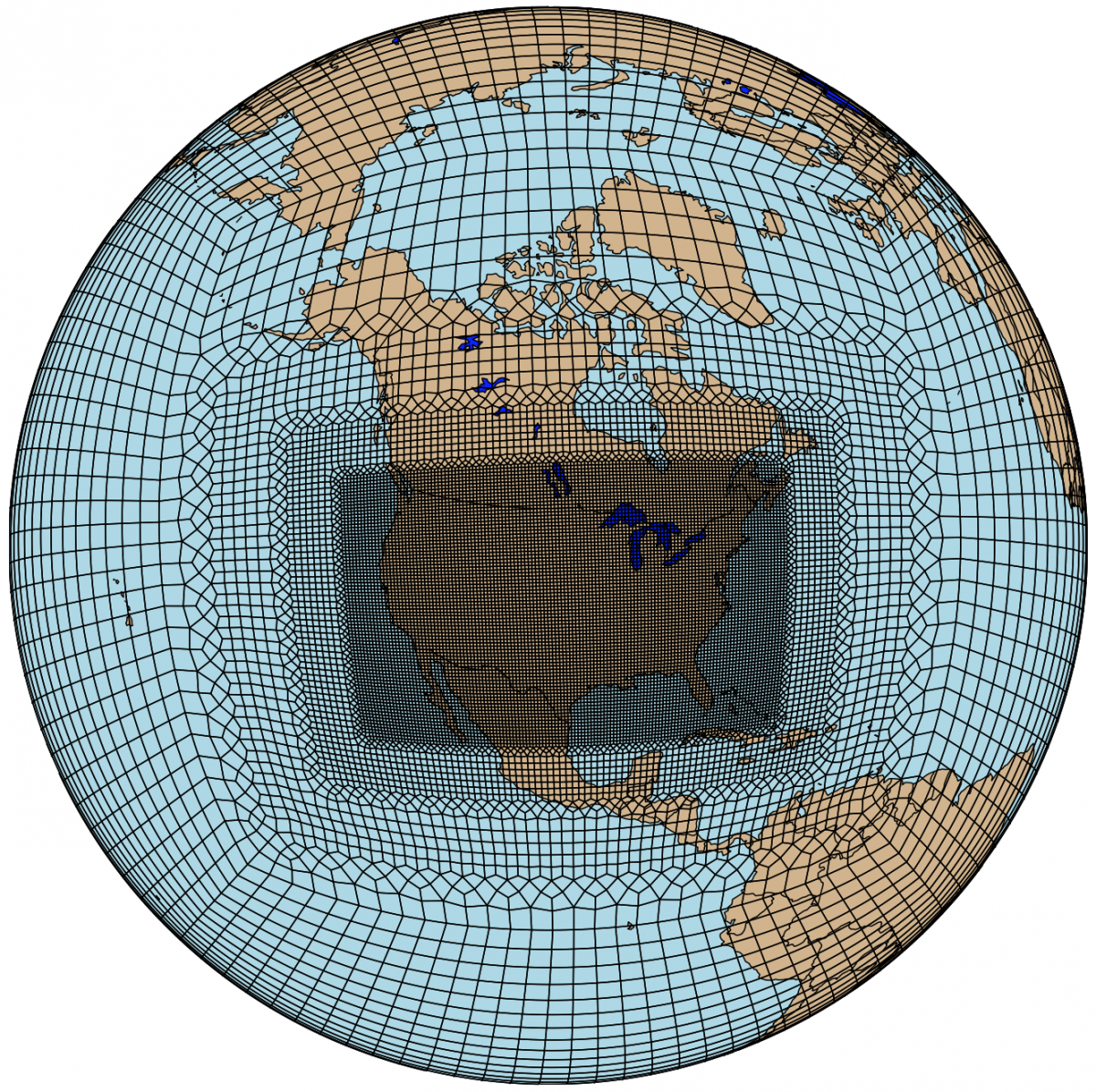The Future of Snow: High Resolution Snow Projections for the Continental United States Under Lower and Higher Climate Forcing
Across most of the continental United States, winter is warming faster than summer, and the warming is more pronounced in seasonally snow-covered regions. With warmer winters, snowy regions have seen fewer days with snow cover, reductions in snow water equivalent, an increased proportion of winter precipitation falling as rain instead of snow, and more frequent mid-winter thaw events. The rapid pace of winter climate change is hypothesized to have large impacts on the natural functioning of ecosystems and corresponding ecosystem services. Next-generation climate modeling provides the framework to run global coupled land–atmosphere simulations with refined regions at higher spatial resolution at a fraction of the computational cost of globally uniform high-resolution grids. Here, we ran the Variable Resolution Community Earth System Model (VR-CESM) global coupled land simulations under historical (1980-2015) conditions and for end of century (2065-2100) lower (Shared Socioeconomic Pathway, SSP2-4.5) and higher (SSP5-8.5) climate pathways, with a refined mesh (0.125°) that covers the continental United States (CONUS) domain. Results will focus on regional biases and future projections for several common snow metrics, including days with snow cover, mid-winter thaw events (ie: to snow-free conditions), snow disappearance date, snow initiation date, total winter snowfall, among others.
Additionally, we place results in the context of the future of the vernal window, an ecological important transitional shoulder season between snow disappearance and canopy green-up. In a warming climate, the vernal window is expected to lengthen, potentially altering energy, water, and carbon cycling as ecosystems trend toward warmer and less snowy winters. Models that can accurately capture ecosystem responses to shifts in seasonal transitions will permit us to evaluate how a future without snow will impact ecosystems both during the shoulder season and the subsequent growing season.

